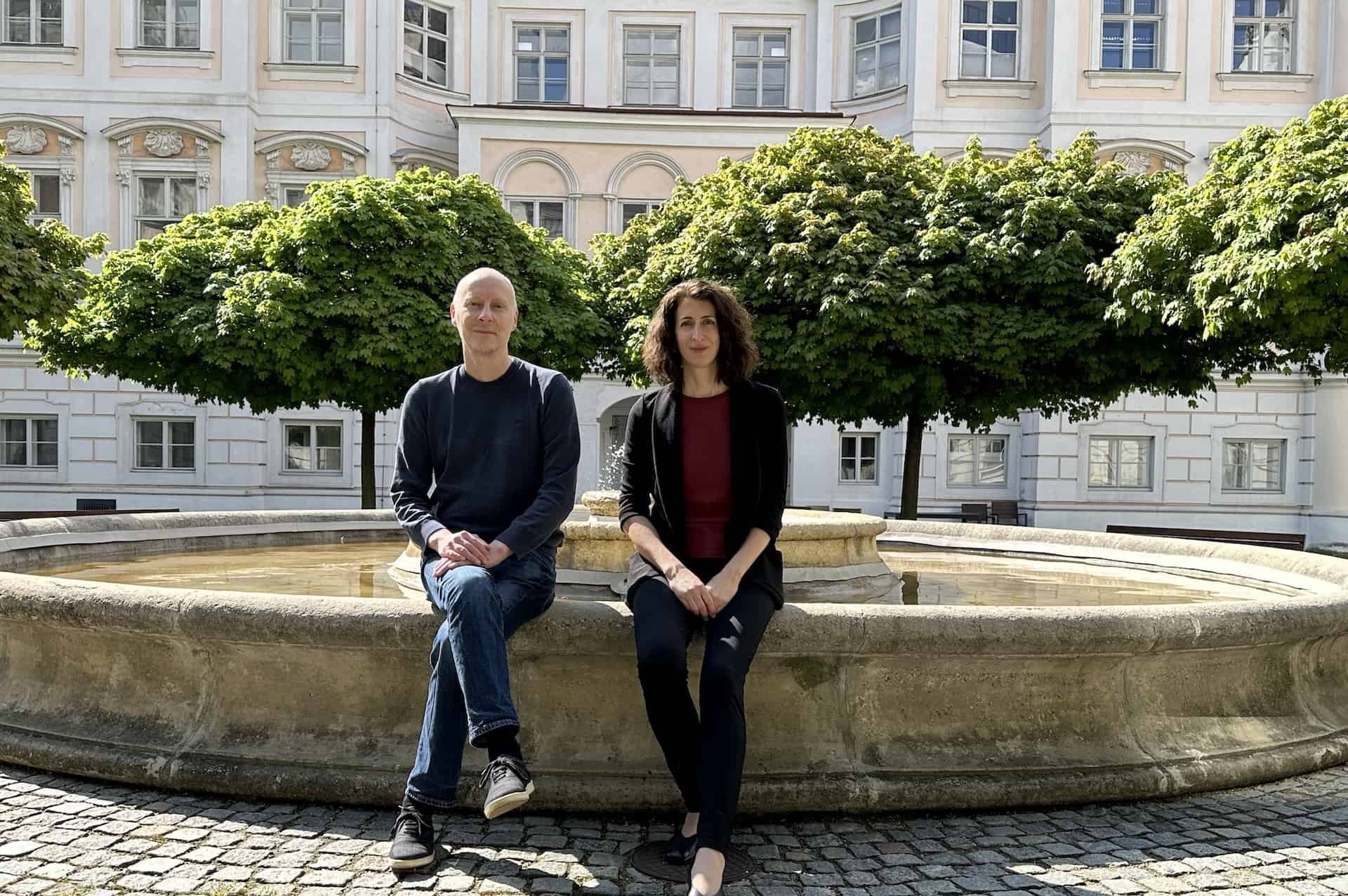How do we solve problems together? And why do some collective solutions seem so wrong? Mirta Galesic and Henrik Olsson, who lead the new research team “Collective Minds” at the Complexity Science Hub, aim to find answers.
AN INTERVIEW:
What will be the focus of your research?
Mirta Galesic:
We want to understand how we change our social networks and the way we make decisions to collectively solve the numerous problems we are facing. We are all constantly switching between different social groups in our daily lives, and each group works a bit differently. We make various decisions about our private lives with family members and friends, solve professional challenges in diverse teams at work, and go about our daily tasks in collectives of other commuters and shoppers. Each of these groups has a bit different way of exchanging information and making decisions, but we manage it without much thought. We are all experts in this process of collective adaptation.
Does this adaptation work similar in larger collectives?
Henrik Olsson:
Organizations and countries also continuously adapt their structures, boundaries, and rules according to which they integrate information and make decisions. Most of the time this adaptation works smoothly, but sometimes a collective gets stuck and fails to solve an important problem. Take climate change, gun laws, or intergroup violence, for example. Going forward, it will be all the more important to understand how collectives change and make decisions.
Mirta Galesic:
I come from Croatia. When I was a teenager, Yugoslav society broke up suddenly and quickly and the war started, lasting ten years. It is easy to call such collective reactions stupid. But this is just a label that is not providing a scientific explanation for why a society collapses. Instead, we should look at it as a product of a long chain of adaptations to problems that Yugoslav states faced throughout their history. We should ask, what was each of these collectives trying to achieve, and what were some critical turning points that led to this devastating collective outcome.
Later you moved to the USA. What did you experience there?
Mirta Galesic:
I was surprised to find that the US can’t seem to solve problems such as health care, extreme inequality, or gun control, although to us – coming from Europe – the solutions might seem obvious. Recently, for example, there was a school shooting in Tennessee, and two days later the neighboring state of North Carolina removed the legal requirement to have a permit to buy handguns. From a European perspective, this seems counterintuitive, but in a country where the right to keep and bear arms is, and has been, a prominent feature of a collective sense of self-determination and freedom, it makes more sense.
Henrik Olsson:
Of course, it is easy to label such collectives as unintelligent – it is a quick label that seems to explain things and it is personally satisfying. But we think that this is a wrong way to look at it.
What then would be the right way?
Henrik Olsson:
We want to go beyond labels like “stupid” or “intelligent”. Rather, we aim to understand the process by which collectives arrive at different outcomes. Today, people are confronted with many problems at the same time. Those people, those collectives that do not act reasonably from the perspective of an external observer, are probably trying to juggle different things at the same time – such as traditions, social cohesion, institutional interests, economic concerns, and so on.
To understand such phenomena, we cannot stay in our disciplinary silos. We need to collaborate and use ideas from many other disciplines.

Mirta Galesic:
We want to look at these mechanisms as a complex system of individual cognitions interacting in social networks and dealing with constantly changing problem landscapes. Therefore, we use group experiments, social media data, and modeling to analyze how collectives change their cognitions and network structures.
What are the big challenges for collectives?
Mirta Galesic:
Sometimes a collective can get stuck in a local optimum that prevents them from achieving a better solution elsewhere. This is the case with climate change, for example. Often, we are so busy trying to find local solutions – creating jobs, clarifying power relations, etc. – so we lose the sight of a bigger problem.
Moreover, collectives often have to take a turn for the worse on the way to a better solution. Let’s say a friend is corrupt. If you report him, you may also jeopardize your social network that helps you with many of your daily challenges. After all, he’s not only corrupt, but he’s your friend too. With the fight against climate change, again it is not just one problem. For example, we all know that we should walk more and drive less, but that often seems suboptimal because walking takes longer than taking the car and we can get wet if it rains.
Henrik Olsson:
Nevertheless, in many cases, collective adaptation works great. After all, we are so successful as a species because we are so good in making and changing our collectives on the fly. Most of the time we manage to both learn from the past and adapt to new problems. That’s why it is also very important for us to find out why we sometimes succeed so well and sometimes seem to fail.
What do new technologies change?
Mirta Galesic:
They offer so many more opportunities to change your network. In the past, you had to go and physically meet with others. Now you can do that online. This makes it easy to create connections, but also to break them up. If you don’t like somebody, you have the possibility to just ghost them.
Henrik Olsson:
In addition, new information channels are changing the way we make decisions or develop ideas. We are also changing our beliefs faster than we used to. New technologies therefore have a significant impact on our collective adaptation.
What do new technologies change?
Mirta Galesic:
One example is women’s rights. It was a difficult process and took a long time, but things have improved. They are not perfect, but better. In many societies, women are now better represented in both the network structures and in the decision-making process. Still a lot remains to be done, and in some societies, we see the reversal of these trends.
Mirta Galesic will present her research at NetSci 2023. This year, the flagship conference of the Network Science Society will be organized by the Complexity Science Hub and the CEU and will take place in Austria for the first time. Vienna will thus become the global center of this research field from July 10-14, 2023.


